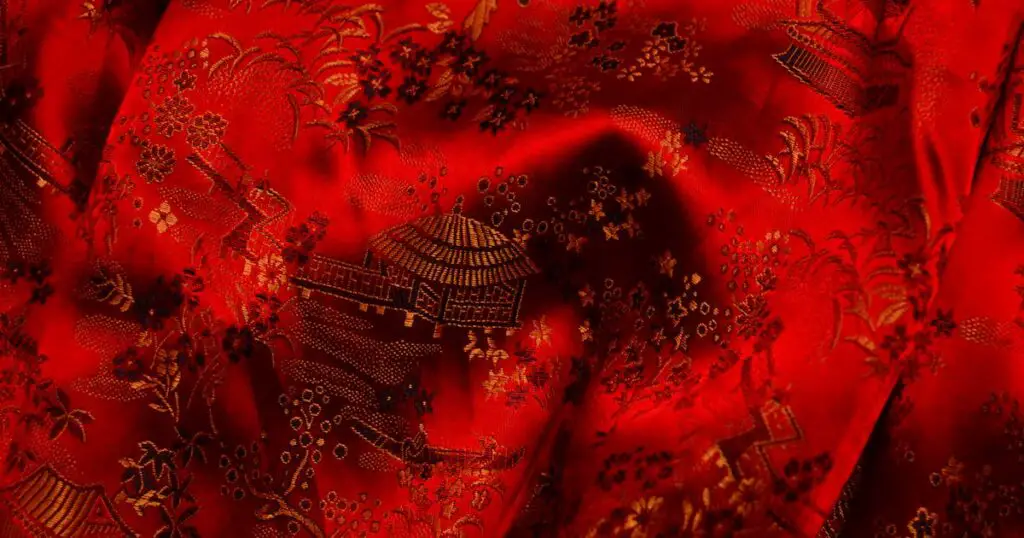Key Takeaway: Understanding the difference between textiles and fabrics is crucial in fashion, interior design, and the textile industry. Textiles are materials made through various processes like weaving or knitting, while fabric refers specifically to textiles prepared for sewing or crafts. Recognizing this distinction improves communication and prevents misunderstandings in professional and creative settings.

When it comes to clothing, home decor, or any other material goods made from textiles, the terms “fabric” and “textile” are often used interchangeably. While both refer to woven or knitted materials to create a finished product, there is a subtle but significant difference between the two. Understanding this distinction can help you make informed choices when purchasing products and add depth to your knowledge of textiles.
What is a Fabric?
A fabric is a versatile material created from fibers that can be either natural, like cotton, silk, and wool, derived from plants and animals, or synthetic, such as polyester and nylon, which are made from chemical processes. These fibers undergo several processes—they are spun into yarns, woven, knitted, or bonded through various techniques to produce a cloth-like material.
The method used in combining these fibers gives each fabric its unique texture and properties, making some more suitable for certain applications than others. For instance, cotton is highly appreciated for its breathability and softness, making it a popular choice for everyday clothing, while silk, known for its smooth texture and sheen, is often used in luxury garments. Wool’s insulating properties make it ideal for warm clothing. On the other hand, polyester is praised for its durability and resistance to shrinkage and wrinkles, making it a staple in both fashion and home furnishings.

Fabrics play a crucial role in our daily lives, offering endless possibilities for creativity and function. They are fashioned into a broad array of products, not only limited to clothing and accessories but also extending to upholstery for furniture, bedding materials, and even technical applications in industrial sectors, showcasing the vast diversity and indispensability of fabrics in modern society.
What is a Textile?
Textiles, on the other hand, refer to any material that has been made by weaving or knitting together fibers. This includes fabrics but also encompasses other materials such as lace, felt, and even non-woven materials like paper or plastic.
Textiles have been used for thousands of years, with evidence of woven textiles dating back to ancient civilizations.
Why Is The Difference Between Textiles And Fabrics Important?
While the terms “textile” and “fabric” are often used interchangeably, understanding the difference between them can be crucial when it comes to making sustainable and ethical purchasing decisions. For example, knowing which fiber has been used and how it was produced is essential when buying clothing made from textiles. Natural fabrics like cotton and wool are more sustainable options compared to synthetic fabrics like polyester, which is derived from non-renewable sources.
Additionally, understanding the difference between textiles and fabrics can help you appreciate these materials’ rich history and cultural significance. For instance, different cultures have unique traditional textiles that hold deep cultural meaning and are often created using specific techniques passed down through generations.
How To Tell The Difference Between A Fabric And A Textile
It can be challenging to tell the difference between a fabric and a textile as they are both materials used in producing goods. However, there are a few key factors that can help you distinguish between the two:

- Fiber content: Textiles encompass a broader range of materials, including non-woven materials like lace and felt. Fabrics, on the other hand, are specifically made from woven or knitted fibers.
- Production process: Textiles can be produced through various methods such as weaving, knitting, felting, or bonding fibers together. Fabrics, on the other hand, are created through weaving or knitting.
- End use: While fabrics can be used to create a wide range of products, including clothing and home decor, textiles have a more diverse end-use. They can be used in fashion and other industries, such as interior design and construction.
FAQs
In this section, we will be delving into some of the most common inquiries and curiosities that surround our topic.
Can all fabrics be considered textiles?
Yes, all fabrics are made from fibers that have been woven or knitted together, making them a type of textile.
How can I determine if a fabric is ethically produced?
Look for certifications or labels that indicate fair labor practices, sustainable production methods, and/or use of organic materials.
Is there a difference in quality between textiles and fabrics?
The quality of textiles and fabrics varies depending on the fiber used and the production process. Factors such as durability and sustainability must be considered when determining the quality of a textile or fabric.
Conclusion: Textile and Fabric Difference
In conclusion, while textiles and fabrics may seem like similar terms, there is a subtle yet significant difference between them. Understanding this distinction can help you make informed choices when purchasing products and add depth to your knowledge of materials used in everyday goods. Additionally, it can also aid in supporting sustainable and ethical practices in the fashion and textile industries.
So, next time you’re shopping for clothing or home decor, take a moment to consider whether it’s made from a fabric or a textile, and how that may impact your purchase. With this knowledge, you can become a more conscious consumer and appreciate the complexity of materials used in everyday goods.



Leave a Comment
You must be logged in to post a comment.